On Sunday afternoon, Manchester City and Tottenham opened up their respective Premier League campaigns with a game at the Tottenham Hotspur Stadium. With reigning champions City strengthening this summer, following falling 90 minutes short of a maiden Champions League title last season, all eyes were on Pep Guardiola’s side to see how they began their Premier League title defence.
Spurs had an underwhelming offseason, with the decision to sack Jose Mourinho at the end of last season leaving them without a manager for a prolonged period of time. Antonio Conte and Paulo Fonseca fell through, leaving them with few other options than Nuno Espirito Santo, who had himself left Wolves by mutual consent after a disappointing 2020/21 season. And yet, despite Manchester City’s signings, and Tottenham’s apparent disarray before the start of the season, it was Spurs who triumphed in this game, with a second half winner courtesy of Heung-Min Son.
This tactical analysis will look at the tactics of both Guardiola and Espirito Santo, providing an analysis on how Tottenham were able to come away with three points.
Lineups and formations
Tottenham fielded a 4-3-3, with Tanganga starting at right-back, alongside a back line of Davinson Sanchez, Eric Dier and Sergio Reguilon. Their midfield was anchor by youth academy product Oliver Skipp, who was so outstanding on loan at Norwich last season and deserves his chance in the first-team. However, when the team sheet was announced on paper before the game, Guardiola could have been forgiven for thinking Pierre-Emile Hojberg would join him as a double pivot with Dele Alli in the 10, but this wasn’t the case. Instead Hojberg was deployed slightly further forward, alongside Dele Alli as two number 8’s. The line-up was rounded out with a very compact front three of Lucas Moura, Son, and Steven Bergwijn. Most noticeably, captain Harry Kane was missing from the squad, with Manchester City circling the Tottenham talisman as they look to complete their summer business with the purchase of the English number 9.
City played with an interesting set-up, where Jack Grealish was deployed further forward, alongside Ferran Torres as an unconventional front two. However, their summer signing from Aston Villa was given freedom to drop or shift out wide and combine with Raheem Sterling, which will be looked at in more detail later on. Sterling was played on the left of midfield, with Riyad Mahrez on the other flank, and Ilkay Gundogan and Fernandinho operating in between them. The defence saw a start for Benjamin Mendy and Nathan Ake, alongside regulars Ruben Dias and Joao Cancelo.
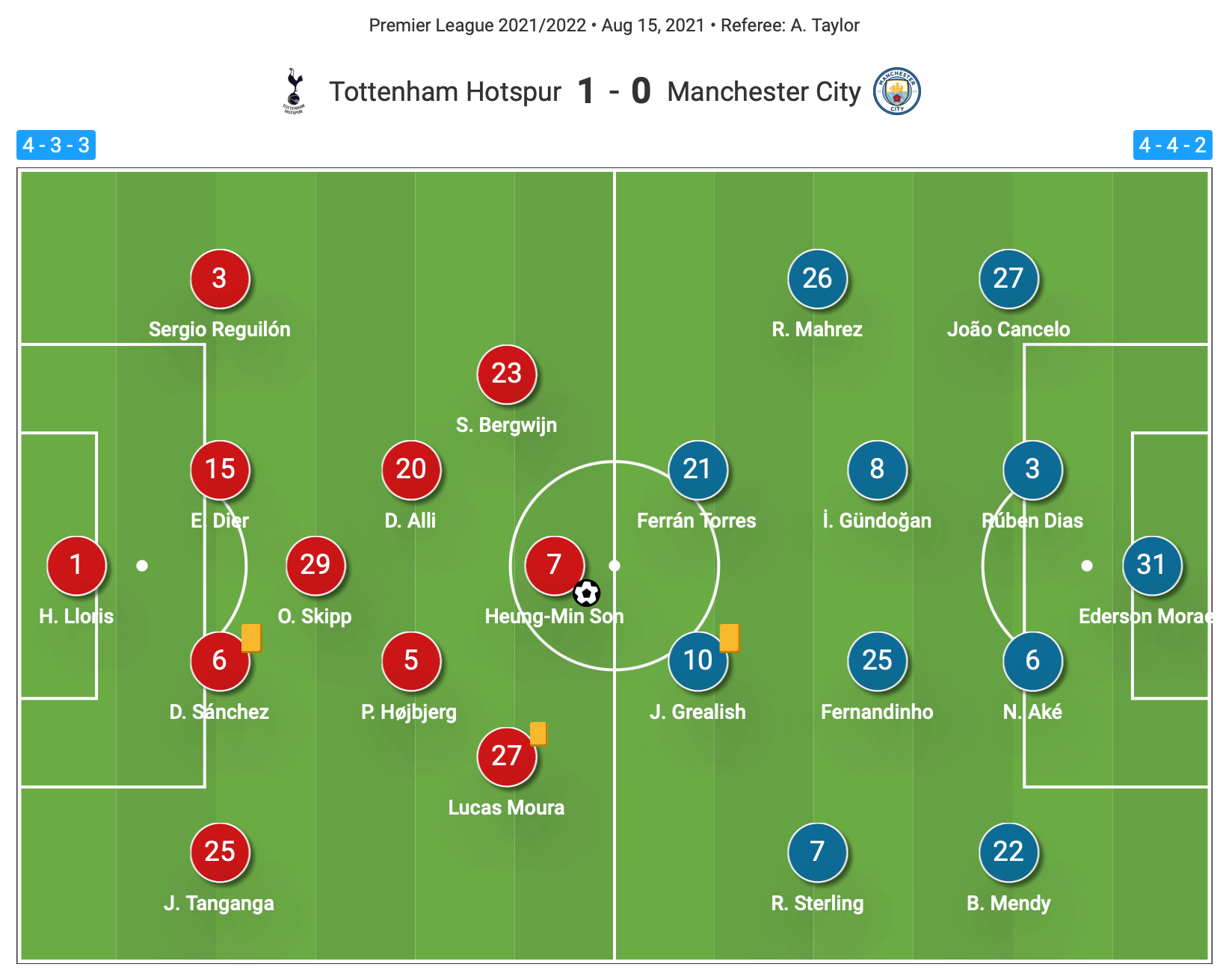
Nullifying the threat of Fernandinho
Tottenham were very reserved in their defensive positioning from the get-go, operating in a mid-to-low block whilst keeping a 4-3-3 shape. The two banks of three stayed incredibly compact and narrow with Tottenham looking to prevent City from being able to get any kind of rhythm in possession, stopping Fernandinho in particular from getting on the ball.
The front three kept a low line of engagement, but still played in close enough proximity to the City back line that Ake and Dias in particular had to be aware of a loss of possession and an instant 3v2 central overload in favour of the Spurs front three. The attacking trio stayed rigid as a tight three, shifting slightly across the pitch as City circled possession, and looked to keep Fernandinho in their cover shadow as they did this.
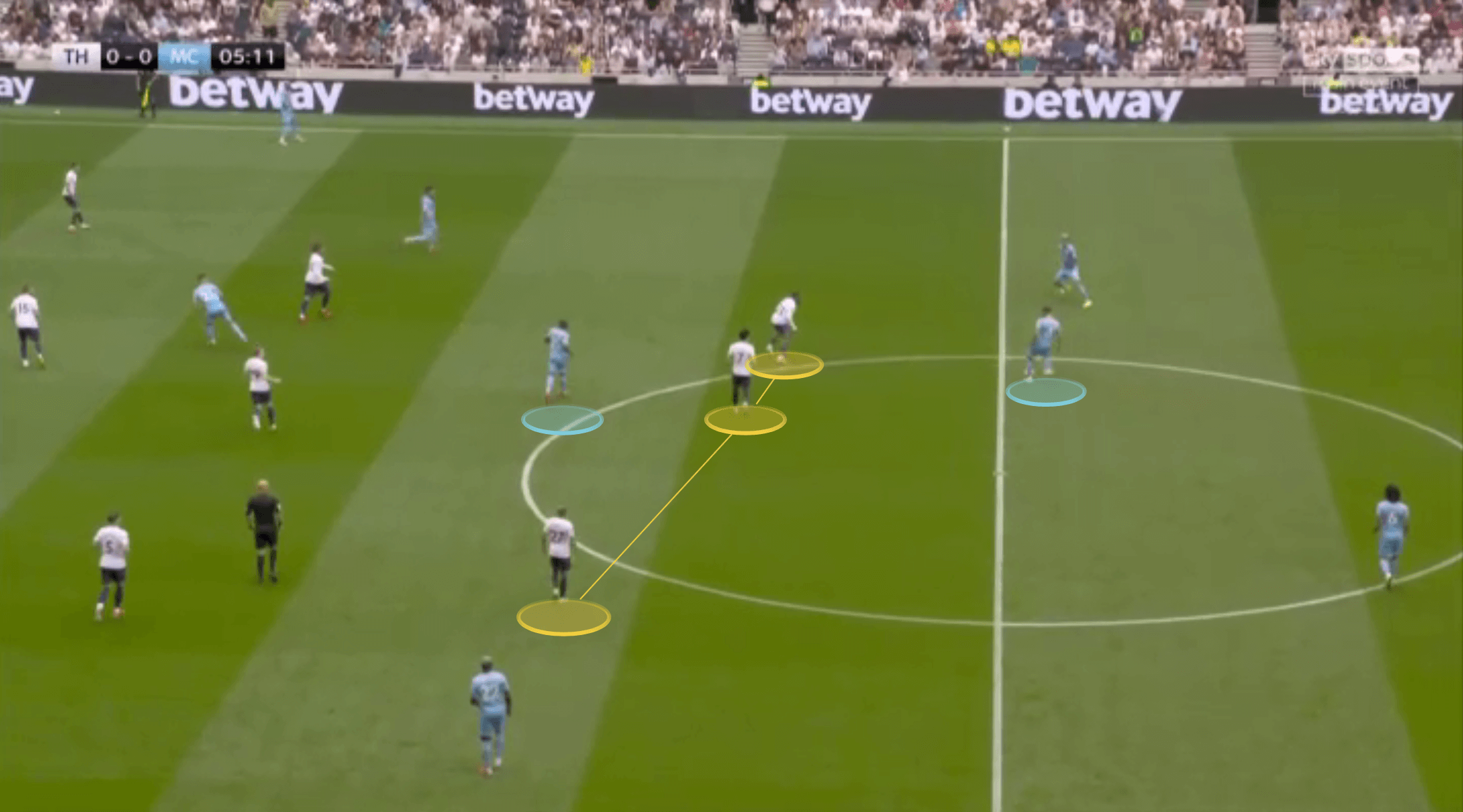
Son played in the centre of this three and if he had to sit as the deepest, that was no problem, with him almost playing on-line with Fernandinho at times. When Tottenham pressed they looked to force City into their crowded central area, with a slight curved press, as we can from Bergwijn in the image below.
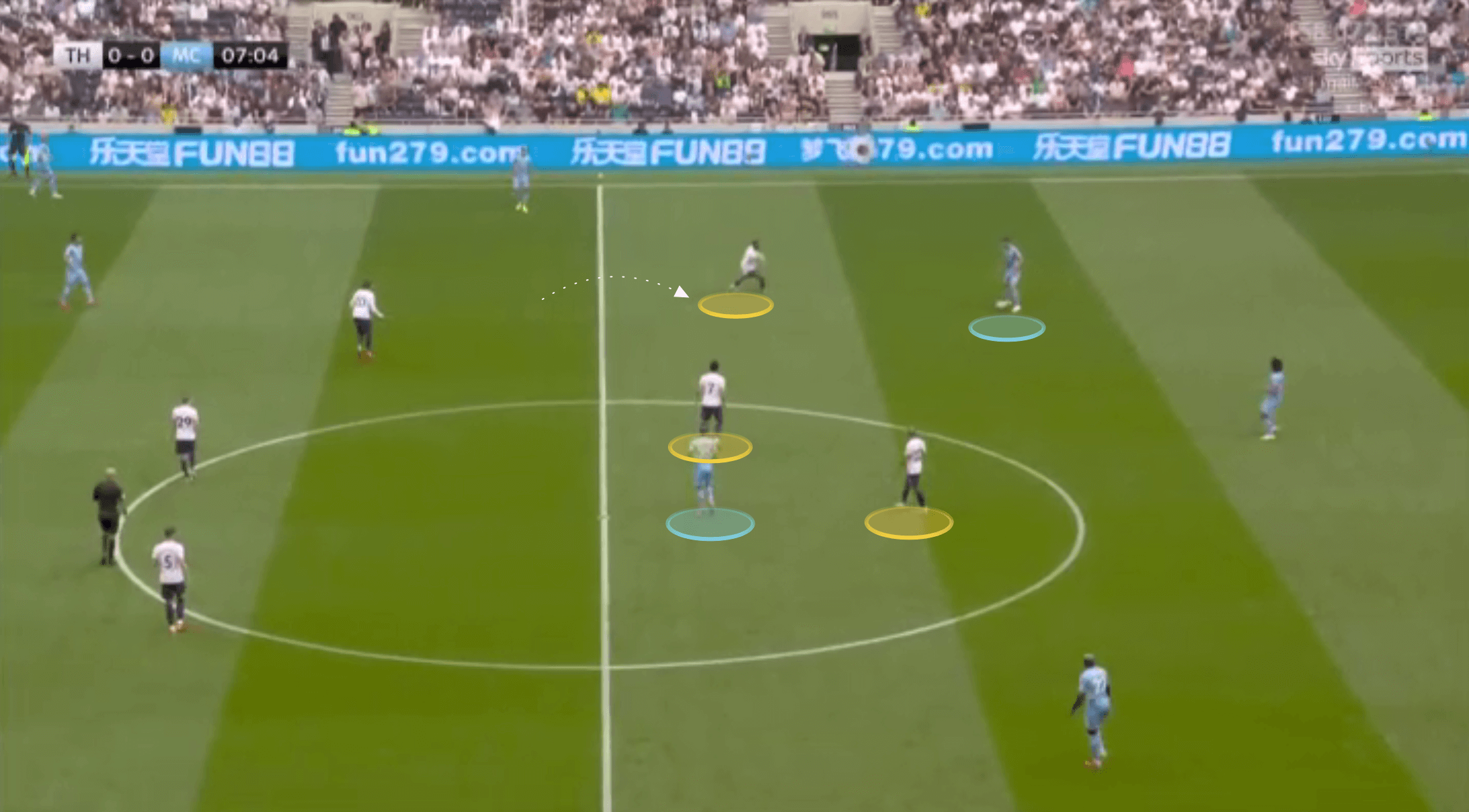
City looked to combat this play having their full-backs – Mendy in particular – receive possession in a more narrow position, in the half-space. From here they could receive the ball in an area that might drag the ball-side Tottenham forward towards them, and out of their compact three, but also to provide a quick third-man pass combination to allow them to get the ball quickly into Fernandinho.
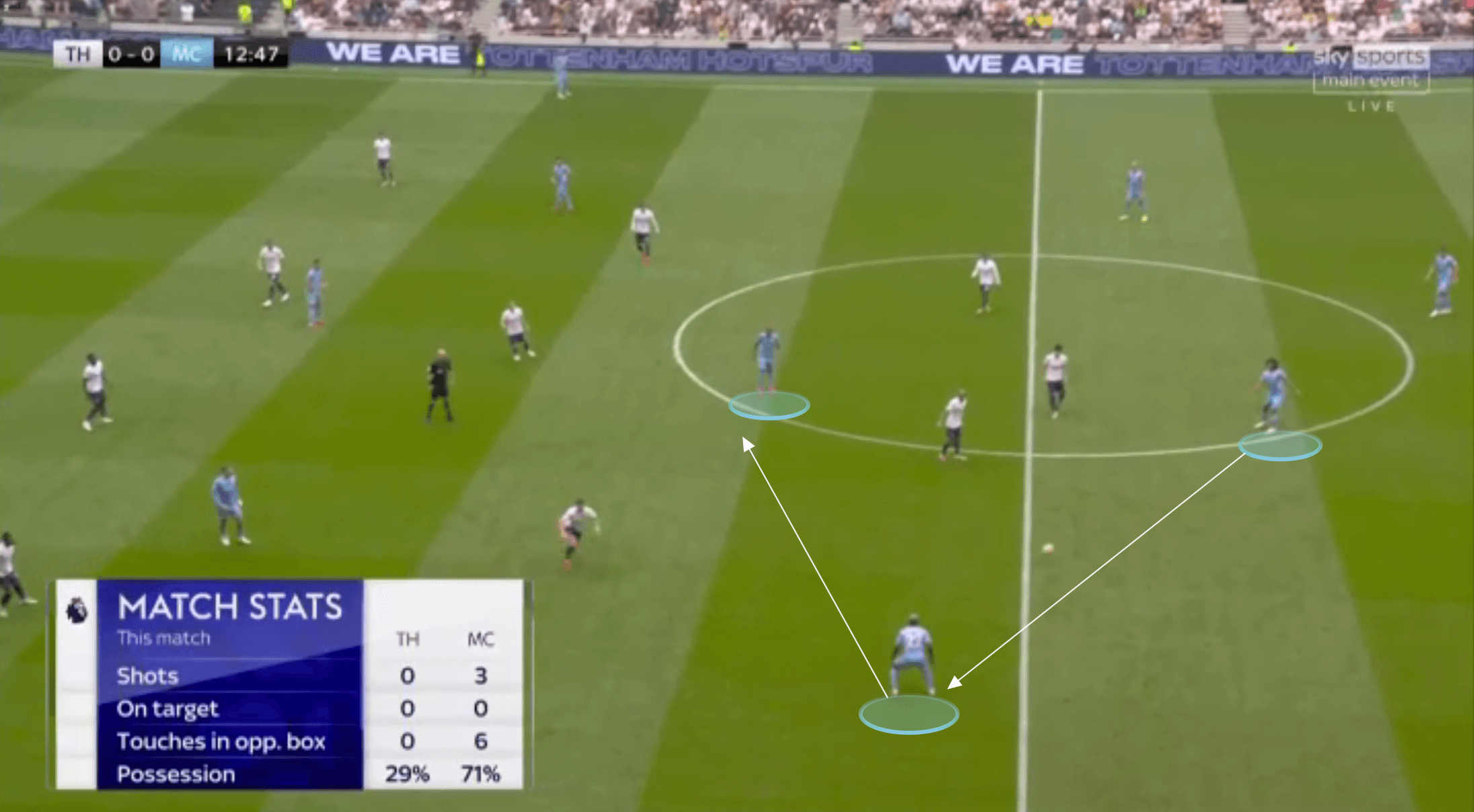
There were times where this was successful, just like in the previous image, but generally Tottenham’s front three did a good job of preventing this pass.
Another option for City, that was less successful, was playing the ball directly into the forward line. Mendy can be seen, in the following image, breaking the lines and playing into Ferran Torres, who was dropping off of Dier. Note the dangerous position of Gundogan just behind Torres, making it imperative that Dier didn’t step forward with the Spaniard.
As the ball was played into Torres, Fernandinho could then push forward and provide an up, back and through passing opportunity. The key to Tottenham dealing with this specific chance was Dele Alli, operating deeper in this moment, but in general providing an outstanding box-to-box performance that may suggest the beginning of a return to form.
Alli was very quick to recognise this pass and his pressure not only cut out the ball, but also allowed Dier to stay in position.
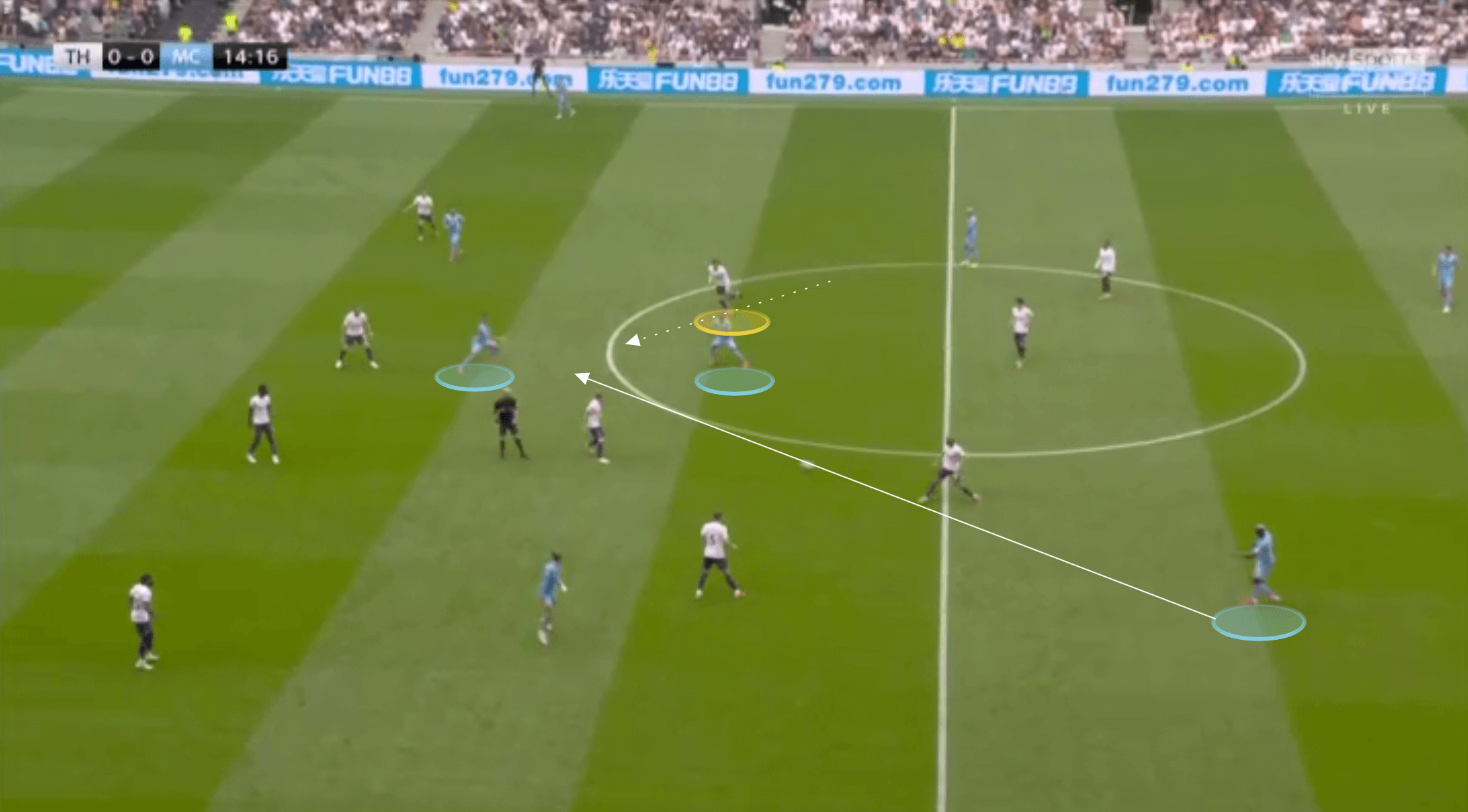
Tottenham were aggressive in preventing the City full-back from getting time on the ball, with the central-midfielder either side of Skipp pushing forward to press. Hojberg and Alli were incredibly disciplined in maintaining this intensity over the course of the game, preventing Mendy and Cancelo from being able to pick forward passes in their own time, and allowing the front three to stay central and compact.
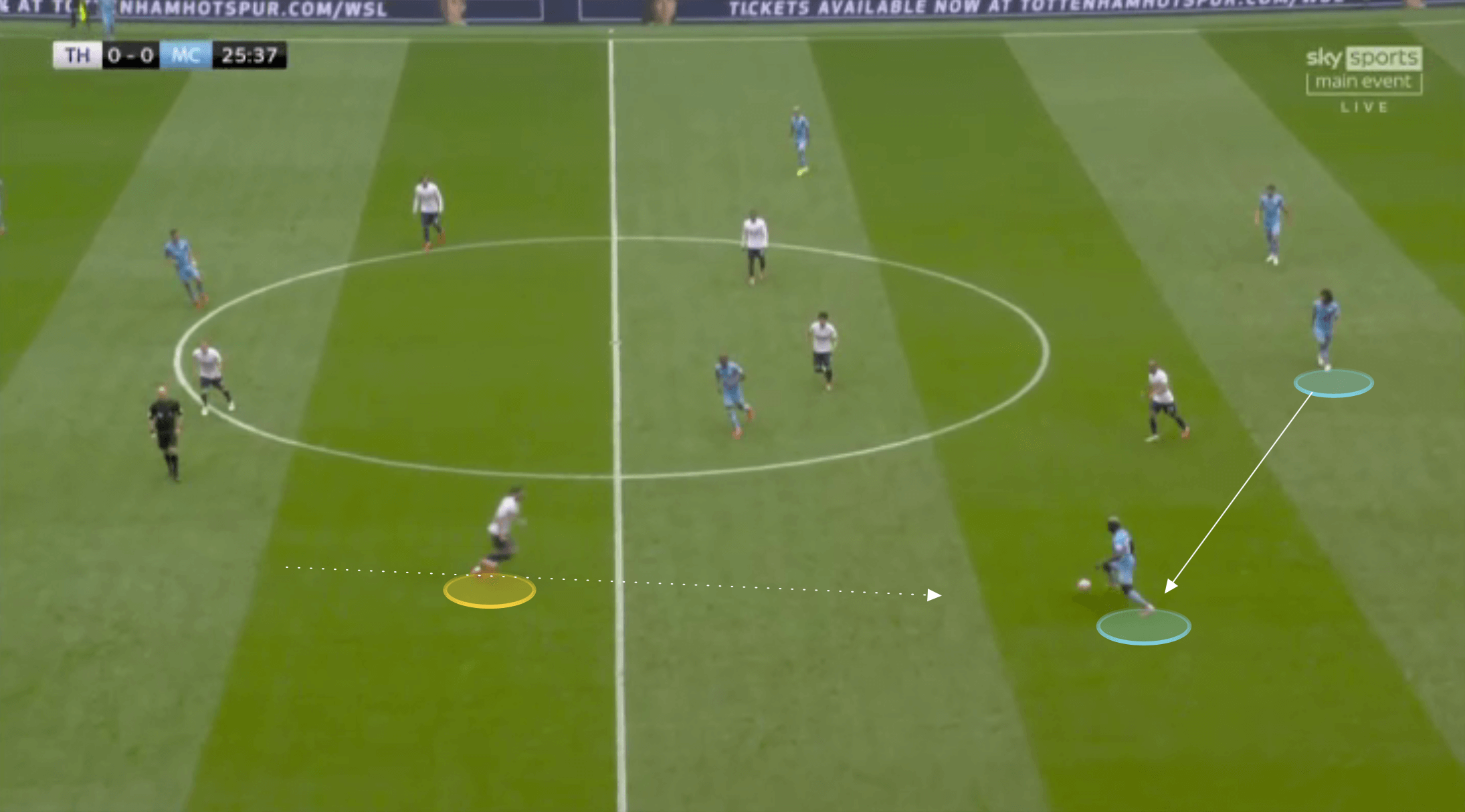
Grealish, Sterling, and Mendy
With the centre of the pitch proving to be too congested for City to structure high-quality attacks through, they naturally sought to use the wings instead. With Pep playing two wingers as centre-forwards, it meant that as the ball was worked out wide, the ball-side forward could shift into a wider area and combine with the winger and full-back on that side to create an overload. However, due to the centre-forward being a winger, they were also able to be more fluid in their positioning. None more so than Sterling and Grealish, because with Mendy on the left flank, they had an explosive full-back who was confident pushing into high and wide positions himself, where he could operate as the furthest man forward too.
The average positioning shown in the pass map below shows how close Grealish (10) and Sterling (7) played to one another in this game. We can also see that there were a far greater number of passes played between the three of Grealish, Sterling and Mendy than on the other flank between Cancelo, Mahrez and either Gundogan or Torres.
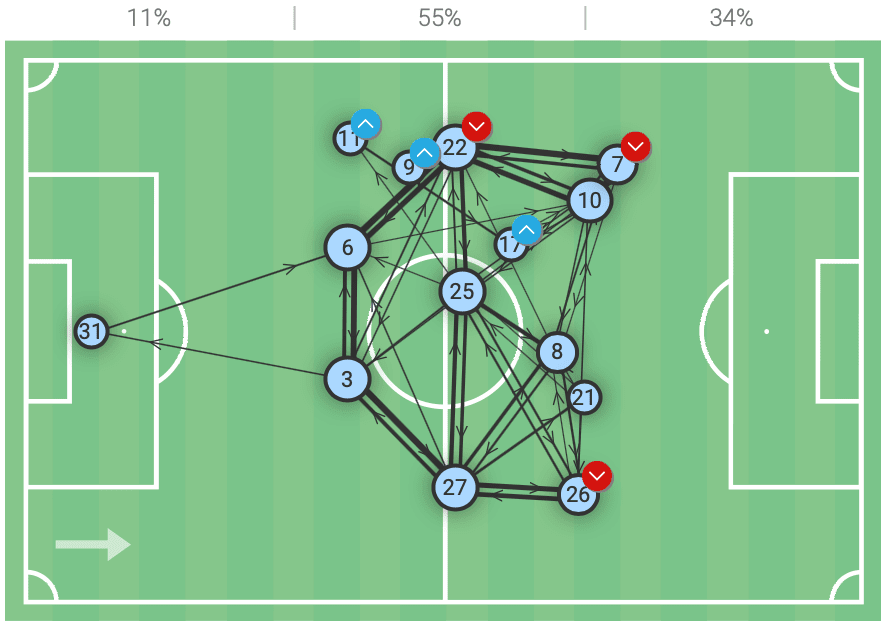
City’s combinations ranged from very simple to slightly more complicated, but regardless of how they looked to play on the left-flank and with what combination of players was involved, they were looking to create overloads.
It could be as simple as Grealish dropping almost as wide as Sterling and under-lapping his teammate as they had possession on the touchline. This provided an easy pass down the line, but also potentially forced the highlighted Tangagna at right-back for Spurs to move further wide and provide an inside lane for Sterling to drive into with the ball.
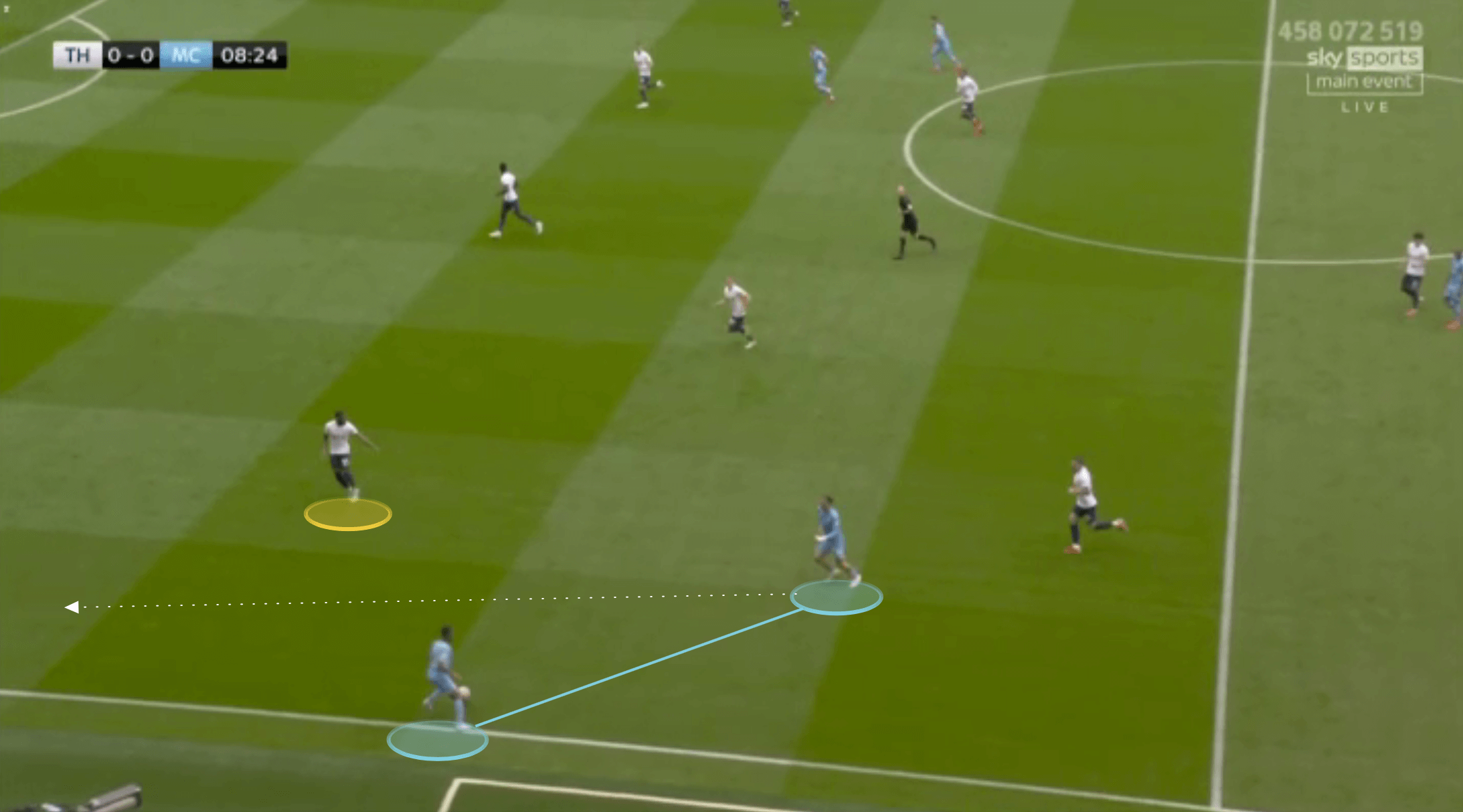
With Mendy pushed high, Grealish was less likely to underlap, but close enough where, as Mendy’s run dragged Tanganga even wider, Grealish could make a run through the half-space between Tanganga and Sanchez. Or this trio may instead have just looked to combine as a three where they enjoyed a 3v2 overload in this space.
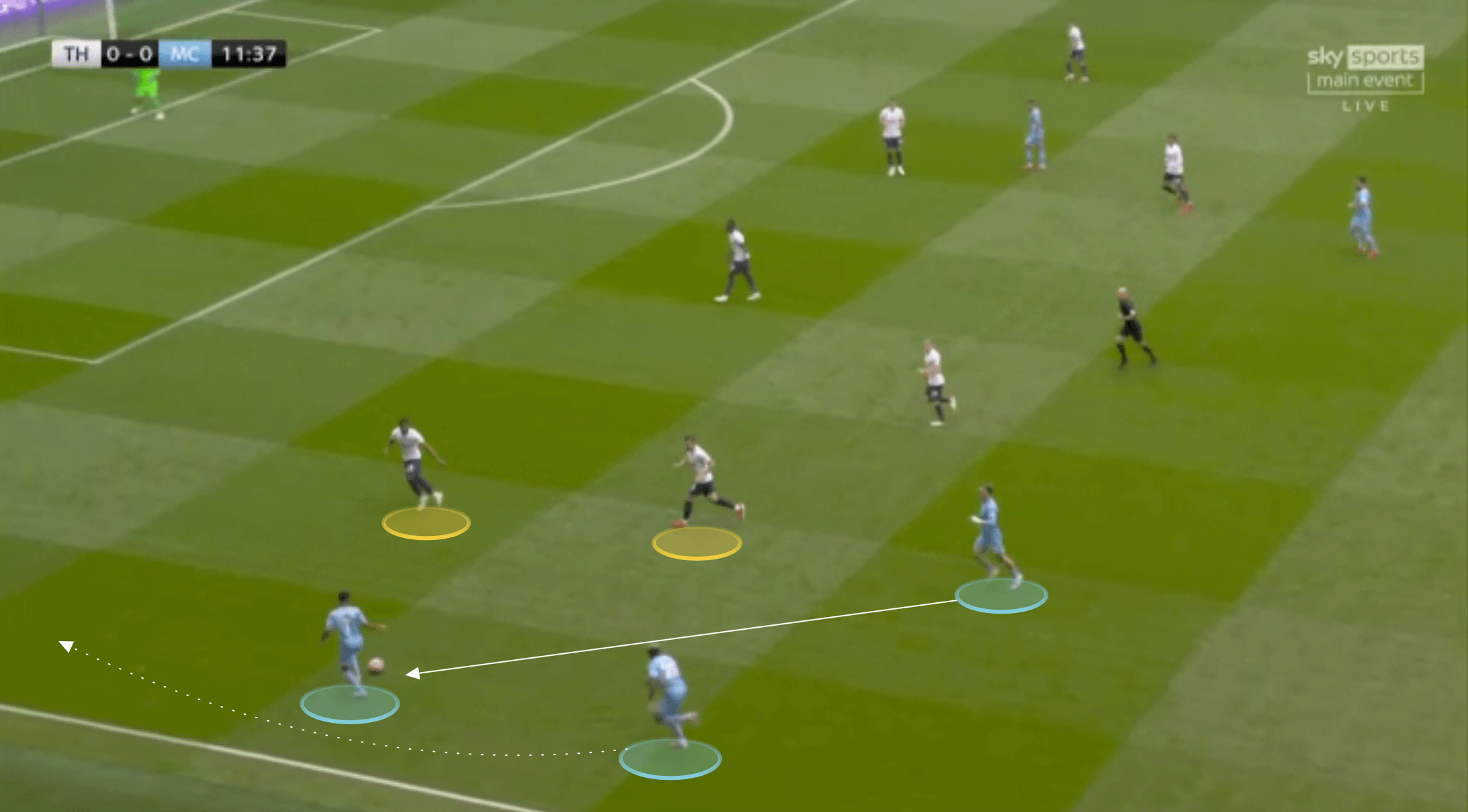
When Grealish started slightly more central, he would use Sterling receiving a pass from his back line as a cue to make his move out wide.
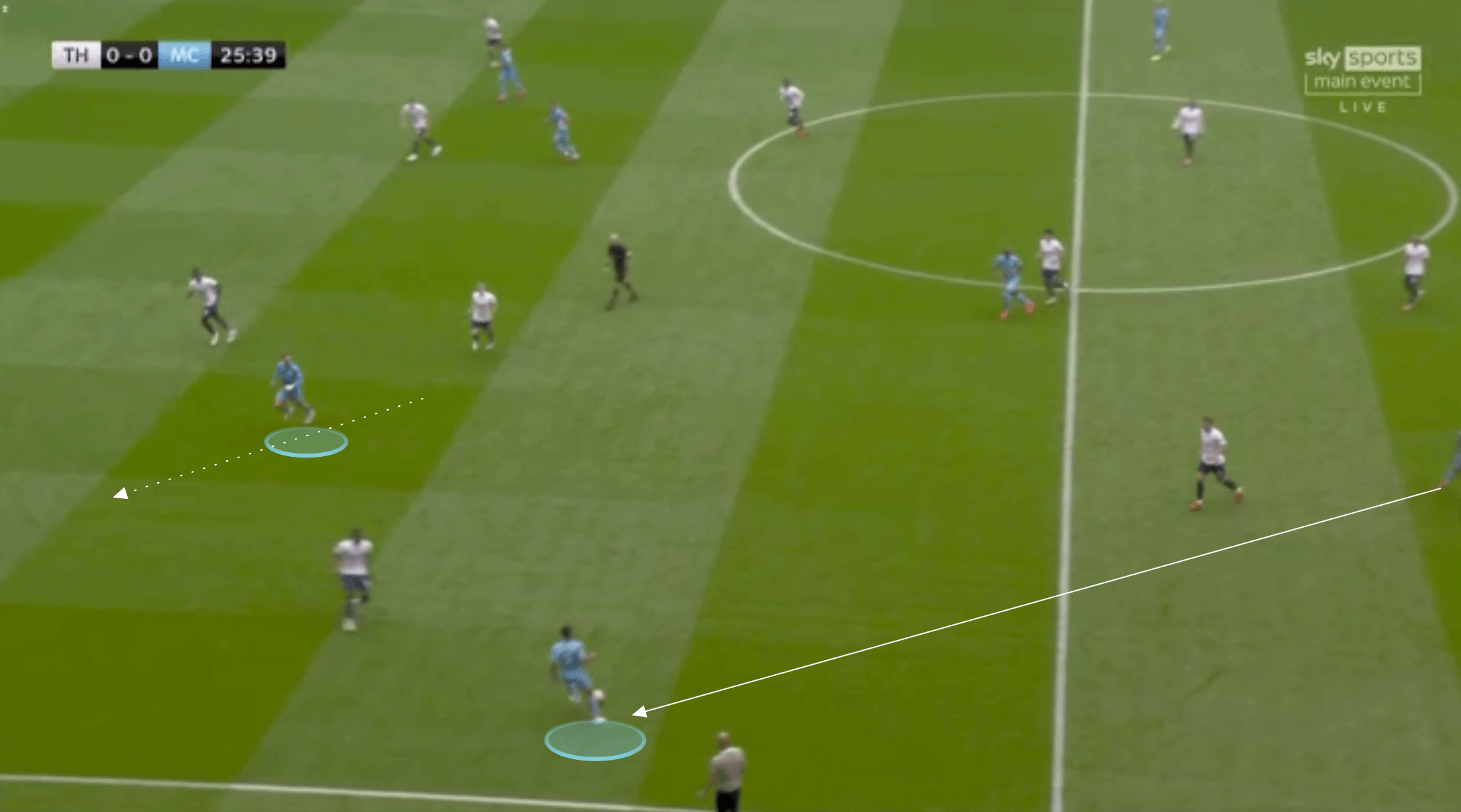
And yet Mendy found himself in a more narrow position at times, as we saw in the previous chapter, and he may have inverted into central-midfield to contribute to build-up. From this position, the left-back would make this run, providing the option down the line, but also dragging Hojberg out of the centre and creating that inside pass option into Grealish.
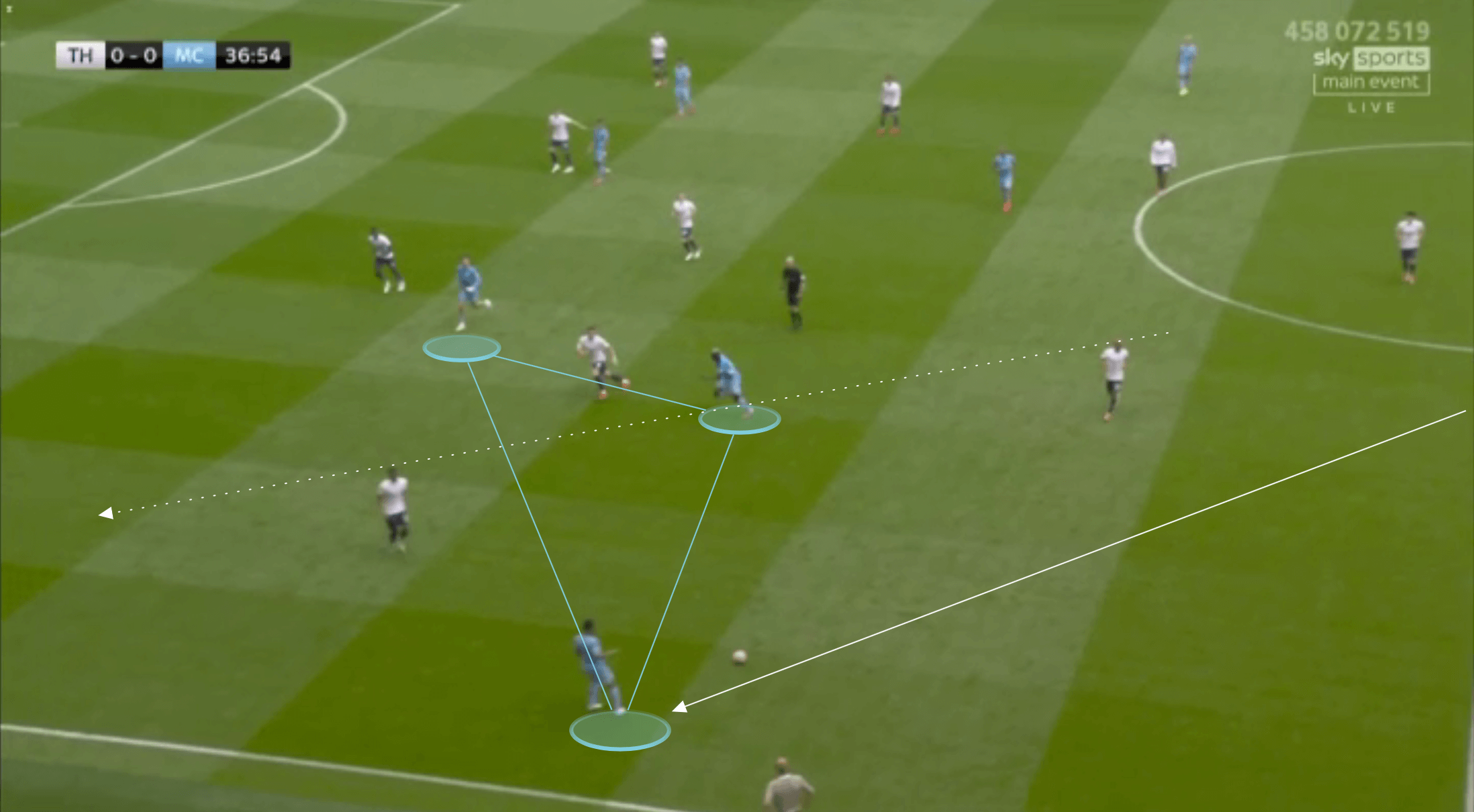
Mendy would push far forward and there were times where he was the highest positioned of the three. When looking to combine as a three, there would be rotations to draw their markers into uncomfortable positions and create forward pass options. In the image below, Sterling played into Grealish who in turn found Mendy down the line. The left-back moved from his position in the half-space to the wing, and this allowed Sterling to rotate into the space previously occupied by Mendy – where he could receive the ball inside.
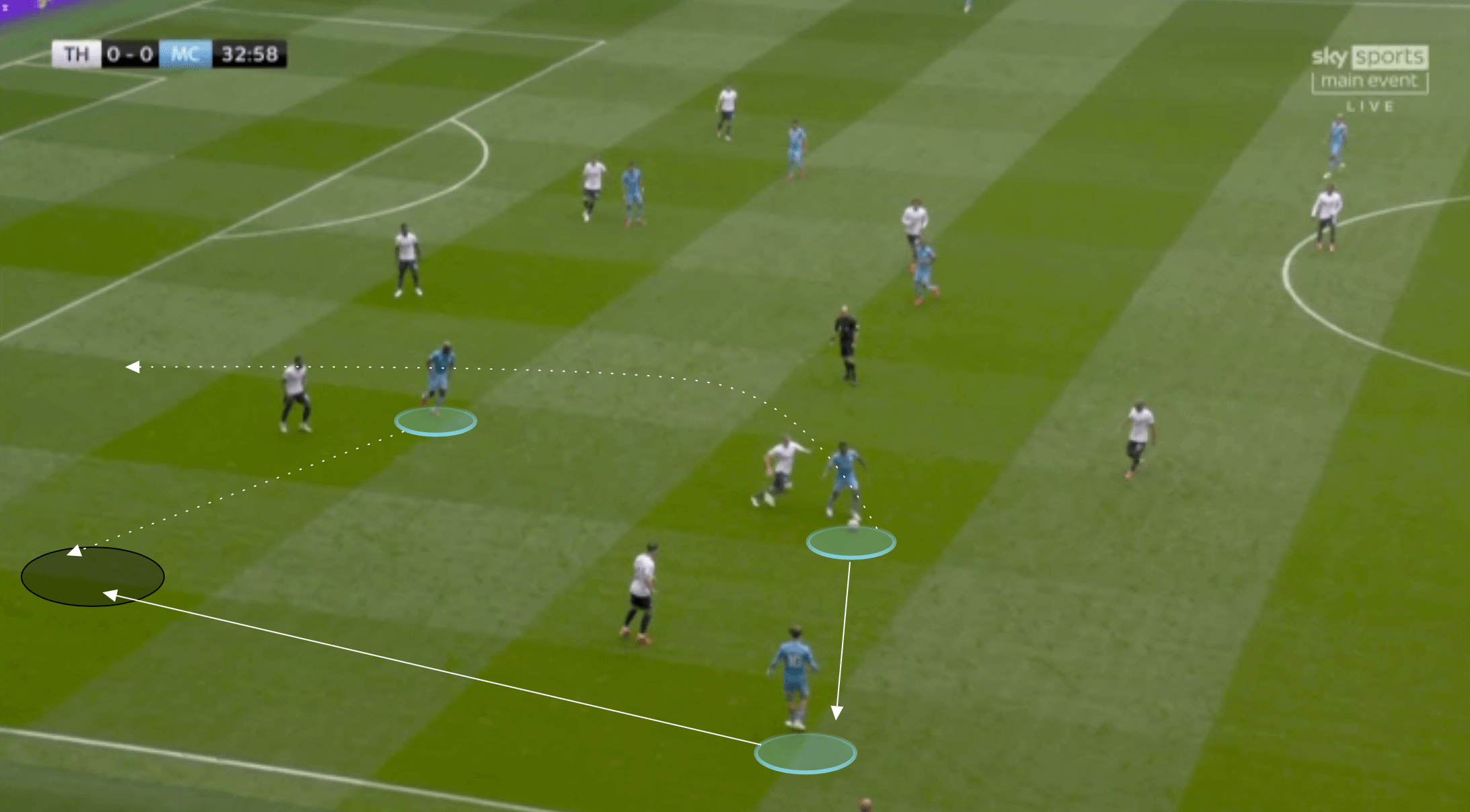
Lucas Moura and Tottenham’s quick breaks
Moura was instrumental to everything Tottenham looked to do in attack, whether that was building play for more structured attacks, or whether that was orchestrating a quick break.
Moura would move into the 10 space in possession, and would largely be left isolated in this area, with Alli and Hojberg drifting wider to get on the ball themselves. And yet Moura was still able to link play across the width of the pitch, with a licence to roam as wide or as deep as he saw fit.
This was exemplified by a pattern of play in the 42nd minute where Moura dropped deep to receive a short pass in the pivot space from Dier.
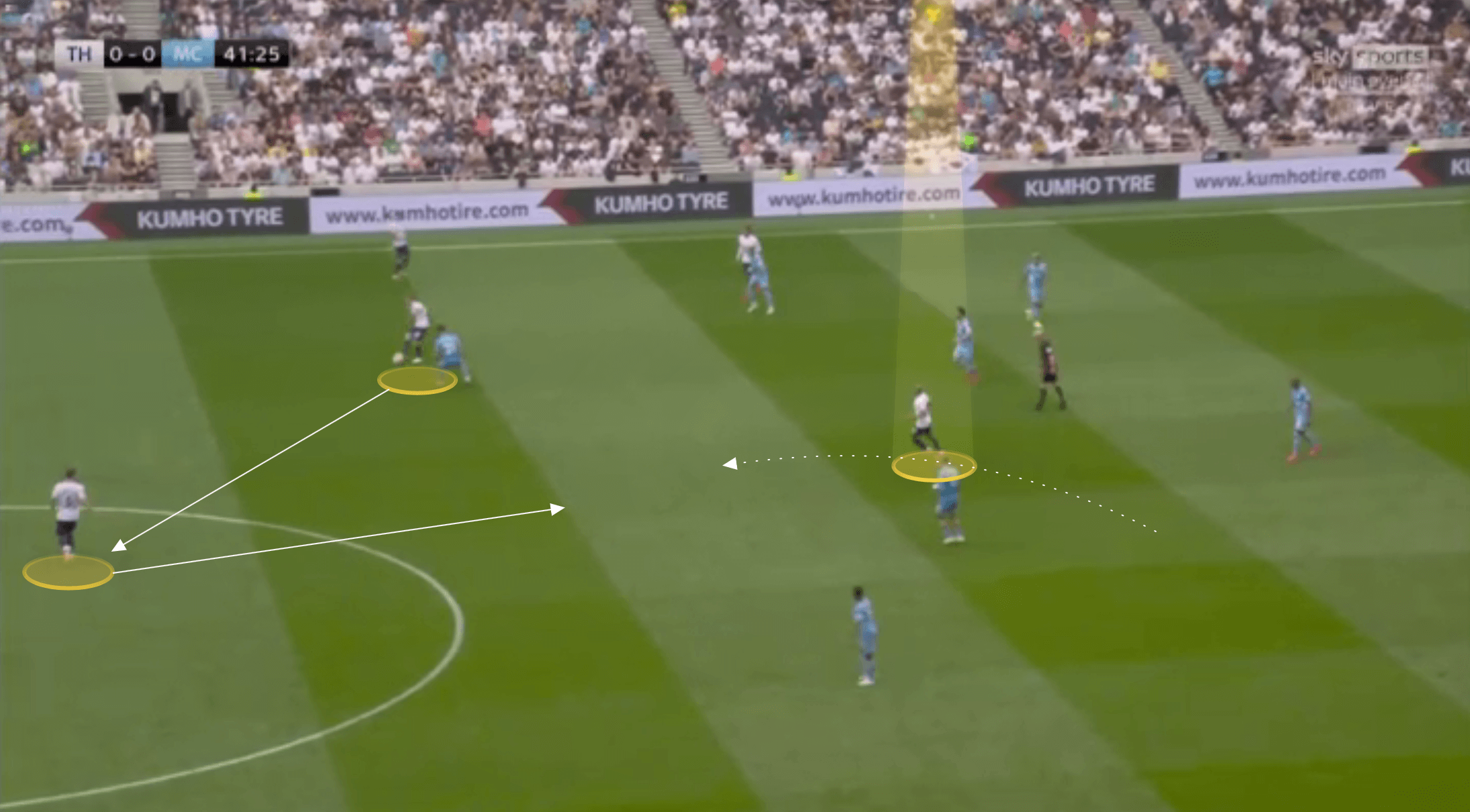
He then bounced the ball off to Sanchez, before moving forward once more, this time into the right half-space.
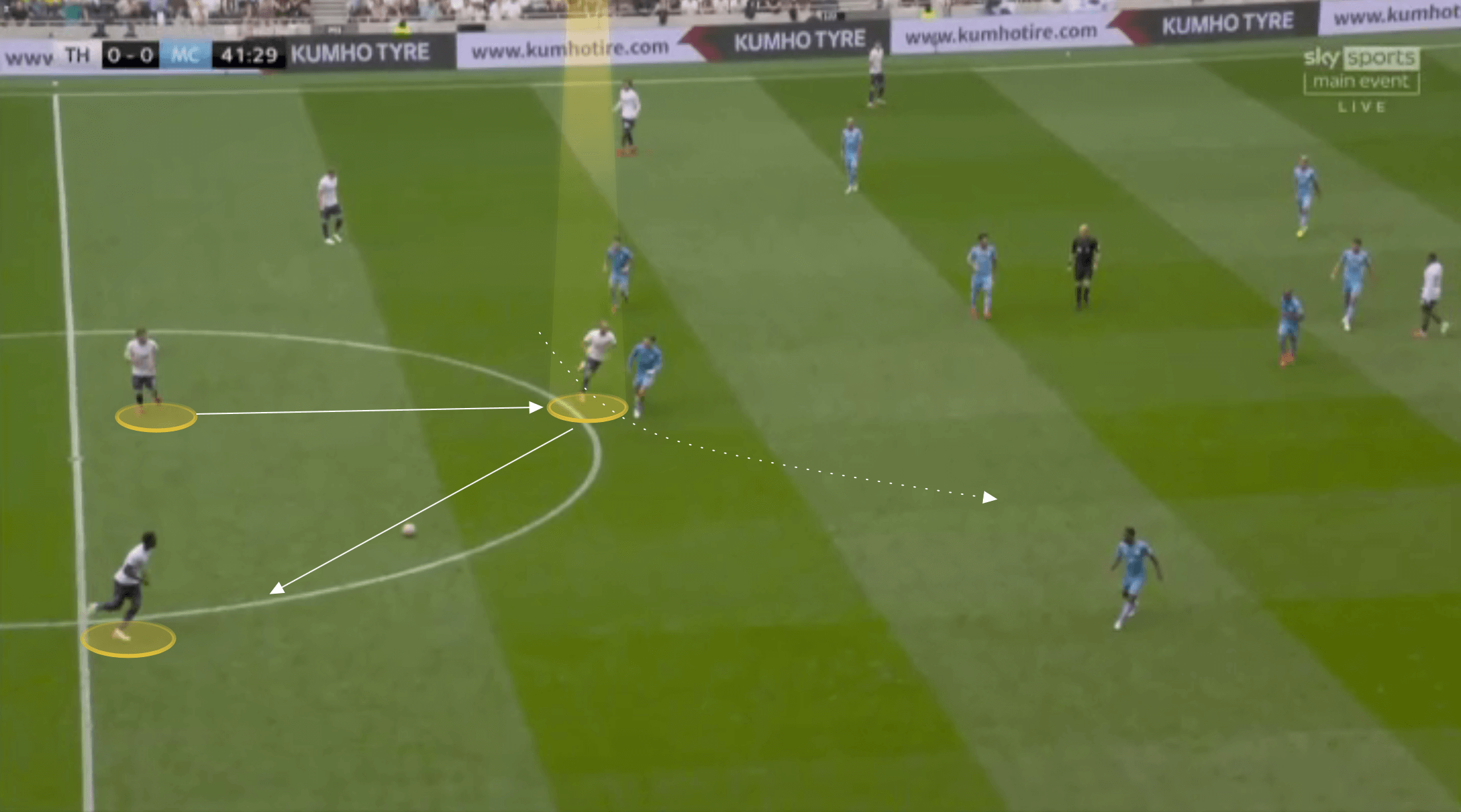
From this position he could then combine with Tanganga, playing the right-back in behind.
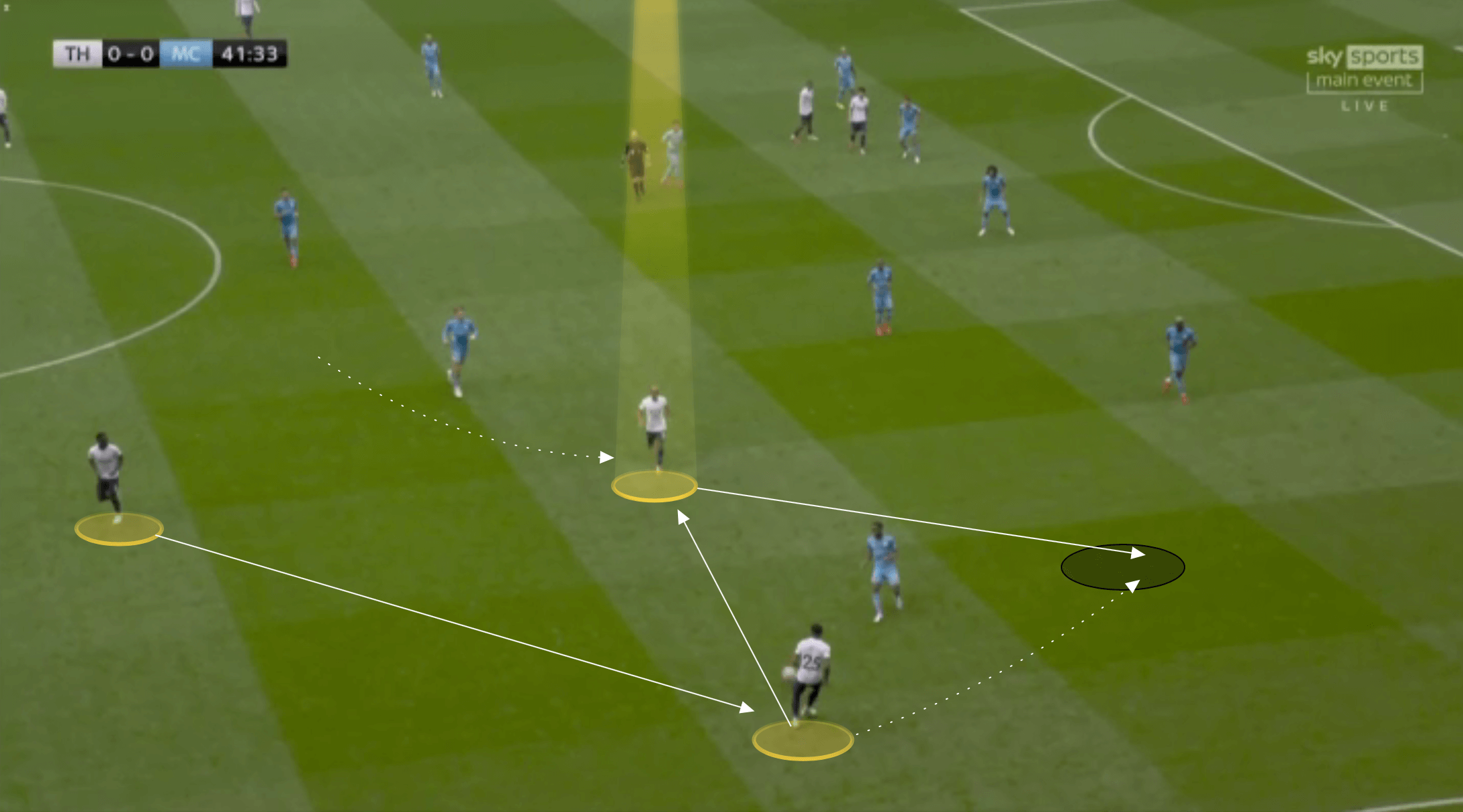
From his position Moura was able to consistently link play across the width of the pitch and he had the room to drop deep too.
But he was more key in being the ball-carrier on counter-attacks. With City having over 60% of possession in this game, and Tottnehma defending in a deep shape, they were able to create chances for themselves by winning back possession in or around their own area and quickly playing forward. With the pace of Tottenham’s front three, they were able to create quality chances through simple, direct quick breaks.
Moura would frequently ensure he was always available as a first option for his defenders on attacking transition.
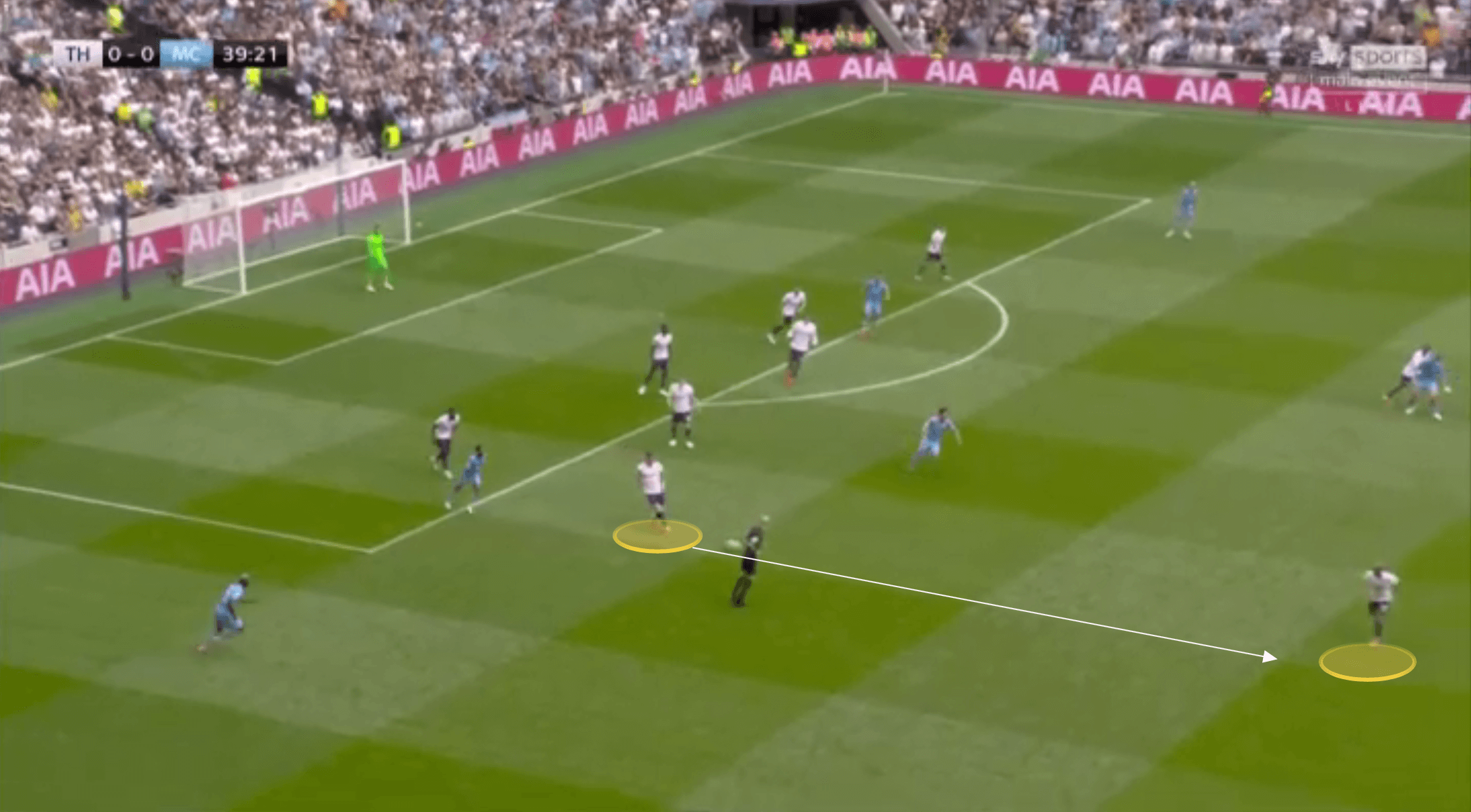
He would subsequently carry the ball forward, and look for either Bergwijn or Son in attack.
The type of area Son is seen shooting from in the image below was clearly something Spurs had worked at. Several of their strikes came from one of the forwards being played in on the quick break and rather than taking on the last man and trying to break into the area, they would quickly cut inside and shoot from this distance. Son’s goal in the second half came from such a situation.
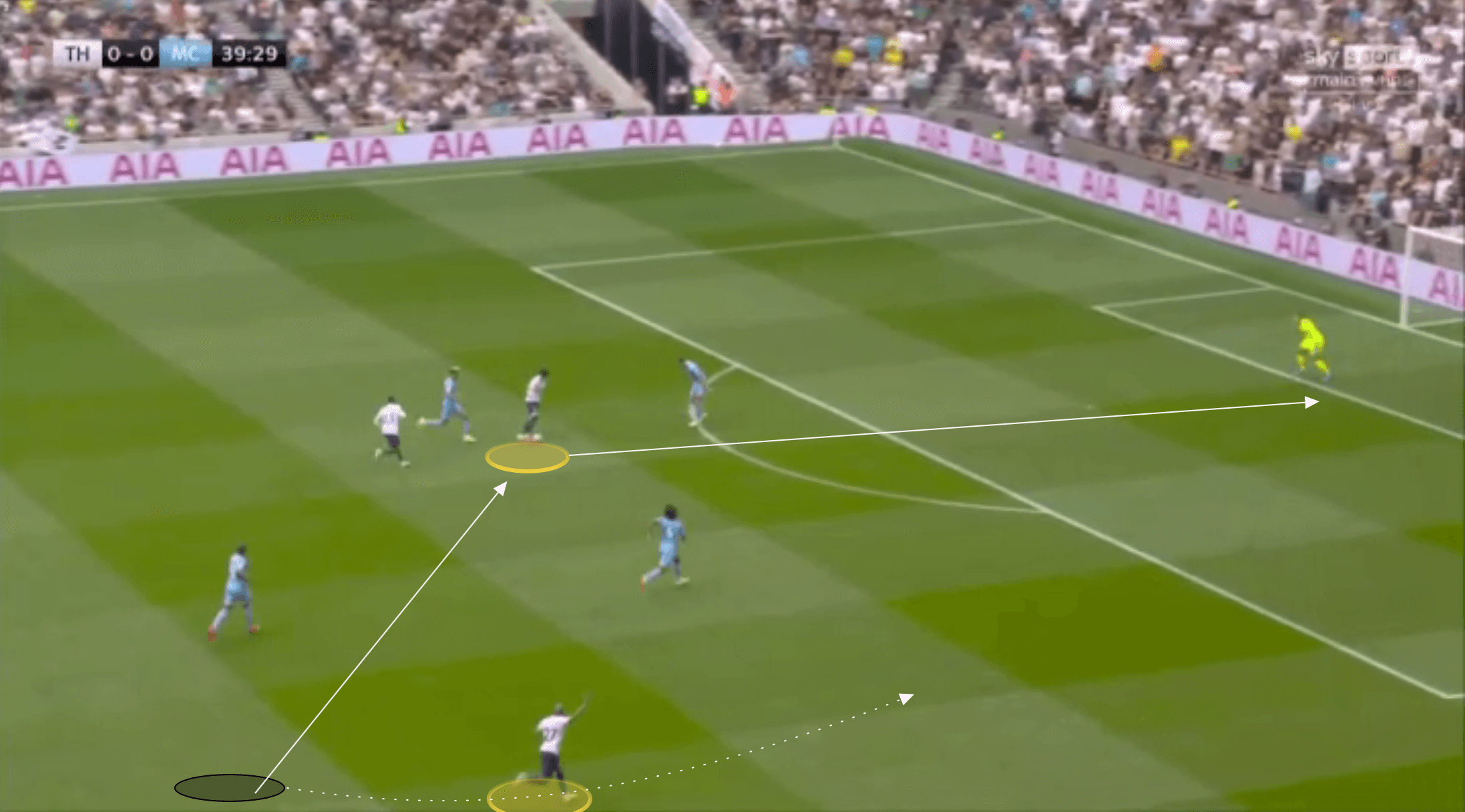
Moura did an excellent job as a ball-carrier when he had space to drive into, moving quickly with the ball but all the while looking for a forward pass option. However, he showed quality at progressing the ball even in more congested areas, dribbling beyond opponents.
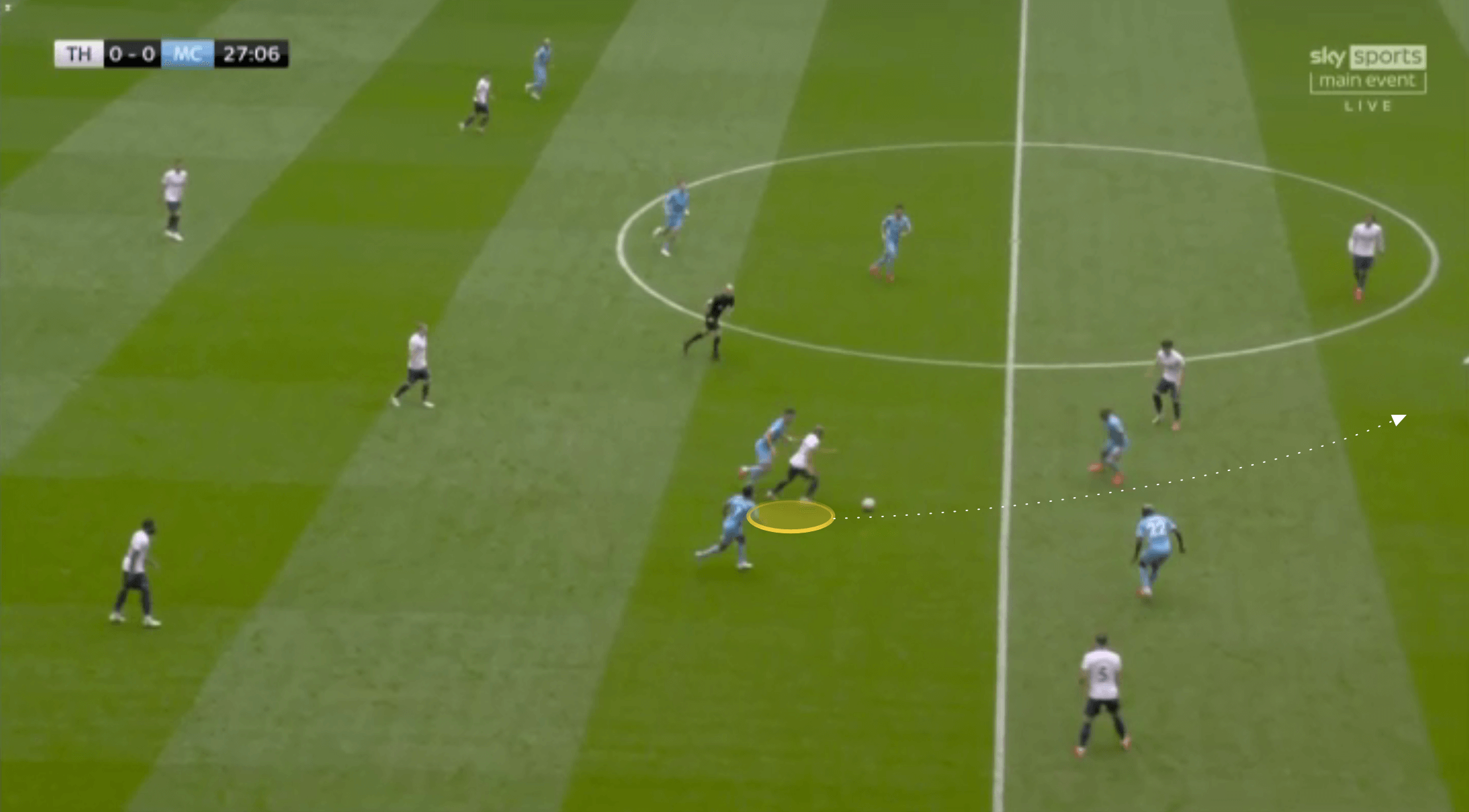
He was able to draw the attention of the City defence towards himself, before releasing a teammate in behind. With Dias focusing on Moura in the image below, Bergwijn was able to spin off of the centre-back and receive in the space behind.
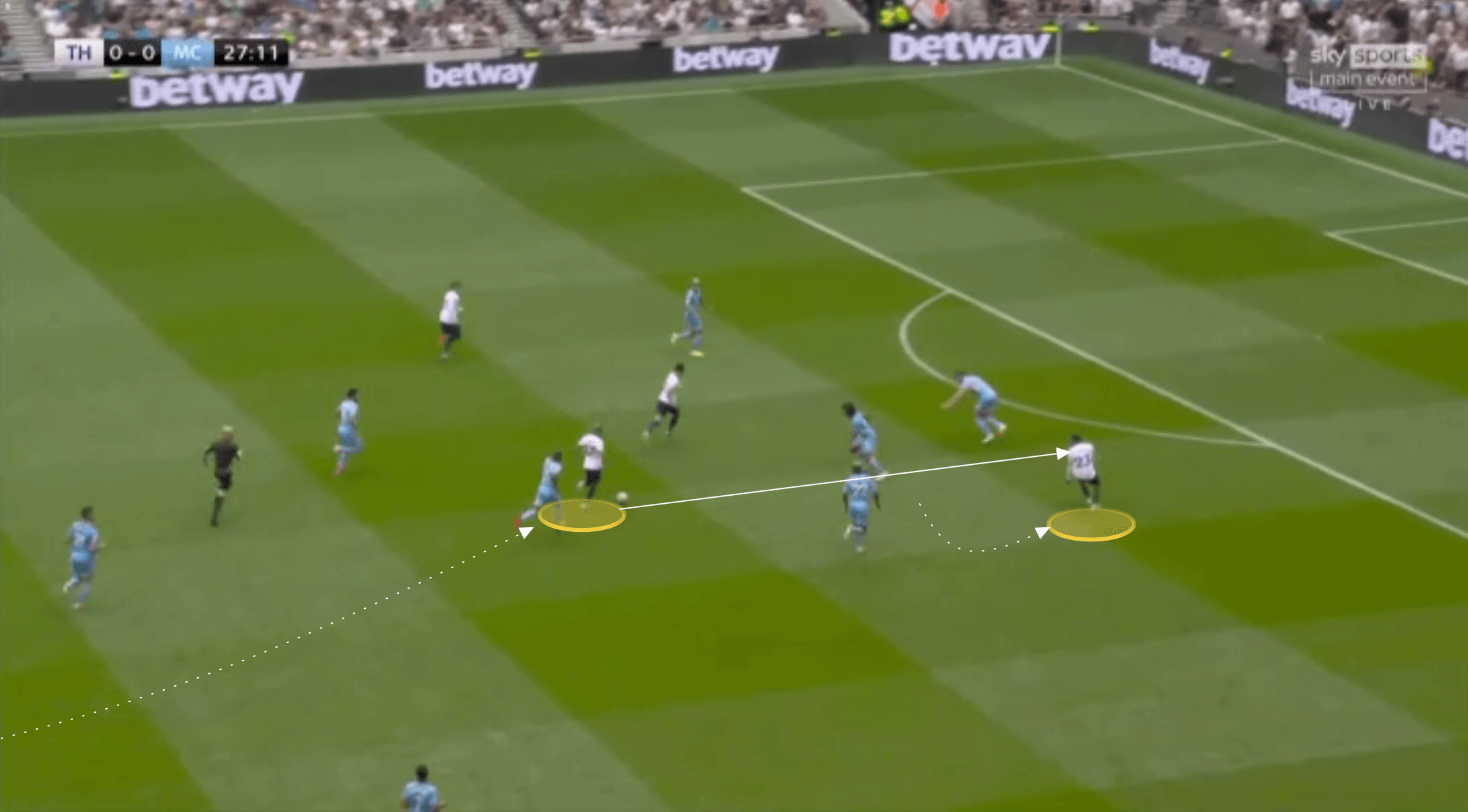
Conclusion
Few would have foreseen such a result occurring given Tottenham’s difficult summer and run of form for much of 2021. And yet Espirito Santo’s simple but very effective tactics gave Spurs a structure that nullified much of City’s strengths and accentuated their own. After the unpopular reign of Mourinho ended, Spurs fans will be willing to get behind the new management team, and such a result on the first game of the season will go some way to doing this.





Comments